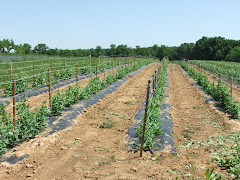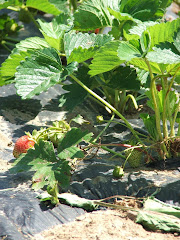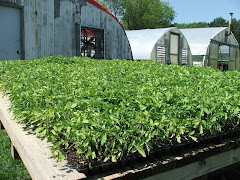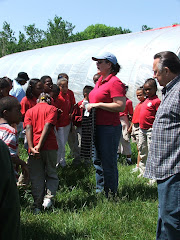 Garlic Scapes, or however else you call them, are the tops of the garlic plant, which need to be cut to promote bulb growth mid-season. Many people are unfamiliar with this delicious and fresh, milder form of garlic, but they happen to be perhaps my favorite vegetable and I hope people enjoy experimenting with them in this weeks' CSA share. They are incredibly tender after only a few minutes of cooking, and pack all the nutrients found in garlic. So here are some scape tips:
Garlic Scapes, or however else you call them, are the tops of the garlic plant, which need to be cut to promote bulb growth mid-season. Many people are unfamiliar with this delicious and fresh, milder form of garlic, but they happen to be perhaps my favorite vegetable and I hope people enjoy experimenting with them in this weeks' CSA share. They are incredibly tender after only a few minutes of cooking, and pack all the nutrients found in garlic. So here are some scape tips:In a salad:
Chop them up and throw them in a salad, they'll add a garlicky punch that is really nice for garlic fans-it isn't as strong as real garlic, so don't worry. I haven't done this, but something tells me they would be great in a salad niçoise.
Sauteed:
Cut off the tough ends and tops of the flower tips of your scapes and sautee in butter or olive oil; I've done this with a tablespoon or two of brown or white sugar (caramalize the sugar briefly in the oil, then add the scapes) or with soy sauce- or both- with excellent results. Scapes only need a few minute
 s of cooking.
s of cooking.Thai Coconut Curry with Garlic Scapes:
Lots of people have a recipe for something like this, and the garlic scapes would work just as well in a stir-fry. Treat the scapes like scallions and chop them up and throw them in with the onion. I made a coconut curry with some friends last night which had coconut milk, lemon grass, ginger, garlic scapes, onion, purple cabbage, carrot, chilis, green peppers and tofu. And yes, it was very good. Just remember to use an oil with a high heat point (peanut oil is good) so you can cook it fast and hot.
And last but not least: Pickled Garlic Scapes!
Yes, that is right, pickled garlic scapes! Exclamation points are necessary because these are just so good, and let you enjoy scapes all through the winter. Pickle them as you would to make dilly beans or pickles (but extra garlic is unnecessary).

photo credits: Patti Truant, Christiana Usenza



